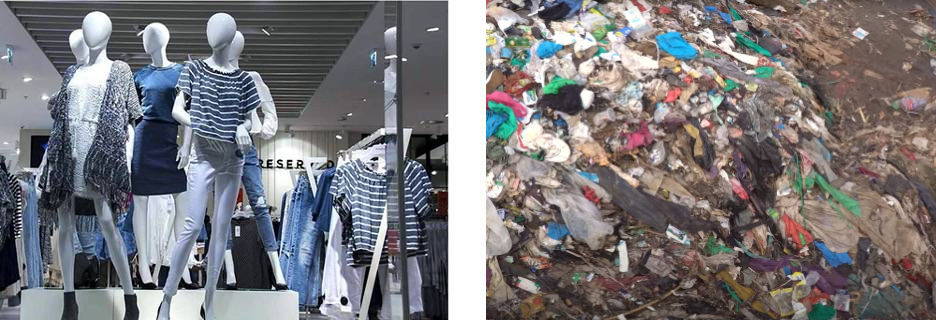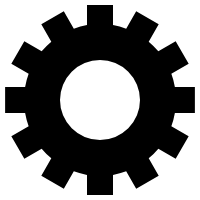CODOGIRL Journal
Resale and Refashion: How to Address the Fashion Industry’s Dirtiest Secret

Most people enter their favorite store and leave with the latest, trendiest pieces of clothing without realizing how much of an impact that cute top or pair of jeans has on the environment. In fact, fashion is the world’s second largest industrial polluter after fossil fuel production, accounting for some 10% of global carbon emissions.
Every step of clothing production - from the farming or creation of synthetic fibers, manufacturing, dyeing and chemical treatment to the eventual disposal of these garments - is an incredibly dirty process with a heavy toll on our environment.
Specifically, today’s clothing industry is dominated by what is known as “Fast Fashion”, or the rapid production of cheap, low quality clothing to keep up with our consumption of rapidly-changing fashion trends.
The fast fashion model is the furthest thing from sustainable, and it is imperative for all fashion consumers to not only spread awareness of its impact, but also take a definitive stand against it.
Fast Fashion Facts:
Many already understand that the current fashion industry is problematic, however most do not know the sheer scope of the consequences. Let’s dive into some fast fashion facts. According to the National Geographic, producing one t-shirt consumes up to 2,700 liters of water?
And what happens to all these garments? One garbage truck worth of clothing gets incinerated or landfilled every second. All that water used during production is essentially for nothing.
Now keep in mind that most of our clothing production is not cotton, but rather synthetic fibers like polyester, which do not decompose over time. These synthetics will sit in landfills for centuries, breaking down into smaller and smaller particles like microplastics, which end up in our oceans and pollute ecosystems.
And what about the people who manufacture these garments? Remember, fast fashion is produced as cheap as possible, which means paying factory workers next to nothing. There is frequent evidence of forced and child labor in third world fashion factories, according to the US Department of Labor.
Because these factories are more often than not located overseas in third world countries, the fast fashion companies, and the consumers are separated from the devastation. And while it is not often reported in the media, the dangerous reality of working in a fast fashion factory presents a threat against basic human rights.
One such case that made headlines was the 2013 Rana Plaza factory disaster - when it collapsed due to a lack of safety protocol, more than 1,136 fast fashion factory workers perished. The consequences of fast fashion are terrible for both the environment and the workers involved in production. Awareness needs to be raised and fast fashion must ultimately be stopped.
How to Break the Fast Fashion Model:
Fast fashion can be summed up in three words: cheap, quick and quantity. Produce cheap garments and accessories, as quickly as possible, and produce large amounts to satisfy the growing consumer base.
This model is incredibly resource intensive, as well as heavy on carbon dioxide and other greenhouse gas (GHG) emissions. We must pursue a path of decarbonization of the fashion industry, or face inevitable consequences of climate change and mass pollution.
The first way to break this model is to reduce the consumption of this cheap, low quality inventory and choose affordable pre-owned quality. Instead of buying low quality, cheap garments - which will inevitably be destined for the landfills - invest into something high quality such as a designer product.
Most people assume designer garments, handbags and accessories are very expensive, and they are right in most cases. However, a new industry has recently emerged - known as designer resale - which many sustainable fashion experts see as the best possible solution to the fashion industry’s greatest problem.
With designer resale, no longer are quality, designer brands unattainable for the regular person. They can purchase the same incredible handmade quality for half, or even up to 70% less than retail prices. The best part is that pre-owned designer handbags and garments can last a lifetime and maintain all their glamour throughout the years and through several owners.
But where do you go to buy these items? We at CODOGIRL are 100% committed to the sustainable fashion movement, providing customers and clients with an online marketplace for authentic, pre-owned luxury designer goods. Everything from handbags, garments to accessories can be purchased at affordable prices.
What’s more, you can sell your designer items either for cash or store credit to use towards something ‘new’. This is what’s known as a circular fashion model - keeping already produced items in rotation and extending their life span. This significantly lowers the carbon footprint associated with the production of those items, as well as cancels out the need to produce something new, i.e. fast fashion.
Inside CODOGIRL’s showroom you will find the pre-owned designer handbags arranged on display in the room known locally as “handbag heaven”. Brands include Hermes, Chanel, Louis Vuitton, Gucci, Prada, Salvatore Ferragamo and many more, all available at attainable prices compared to retail.
Refashion:
Another way to combat the environmental consequences of fast fashion is to extend the useful life of your current wardrobe to lower its carbon footprint. But how do you do this to keep up with changing trends and make sure your outfits are as chic as they are sustainable for the environment?
The solution is called “Refashion”, and it is one of the main components of the fashion decarbonization strategy. An important tool necessary to prolong the life of a garment, the main goal of Refashioning is to ultimately help achieve the GHG emission reduction targets.
How does Refashioning help lower emissions and pollution? The concept is to only use existing materials to repair, or otherwise upgrade an existing item, whether it’s a garment, handbag or accessory. At CODOGIRL we have offered customers our Refashion service for over a decade, with the purpose of changing consumer behaviors and raising awareness towards the emissions involved in the production and end-of-life phases of most fashion products.
Examples of popular Refashion projects: Denim Jackets. See more of CODOGIRL’s refashion samples.
Denim is one of the most resource intensive textile products: from jeans to jackets, they use large amounts of water and require heavy manufacturing inputs, chemical usage and release copious amounts of GHG into the atmosphere. Instead of throwing away old denim, CODOGIRL uses professional acrylic painting and hand-stitching to turn faded denim items into contemporary chic sensations.
Popular Refashion projects include: professional artist painting over dated and vintage handbags, upgrading dated or faded coats with bits of existing fur trim, or hand sewing to spice up cashmere sweaters.
Unlike fast fashion, Refashion does not require the production of new materials in factories, therefore does not emit additional GHG. Also, at CODOGIRL, we Refashion everything by hand, requiring no factories that pollute heavily. If you are creative and open-minded, the possibilities of Refashion are endless, and more and more fashion consumers are learning about the benefits.
There are many ways you can reduce your fashion carbon footprint and take a stand against fast fashion. However, the two most significant methods are to 1) shop for quality pre-owned items that will last, and 2) extend the lifespan of your existing fashion in a sustainable way, by repairing and refashioning.
Doing so represents a circular fashion economy - where an item’s stage of life ends, another can begin. That is the core of our business, and we are happy to see our customers changing their fashion behaviors and understanding the true impact of their fashion choices.



